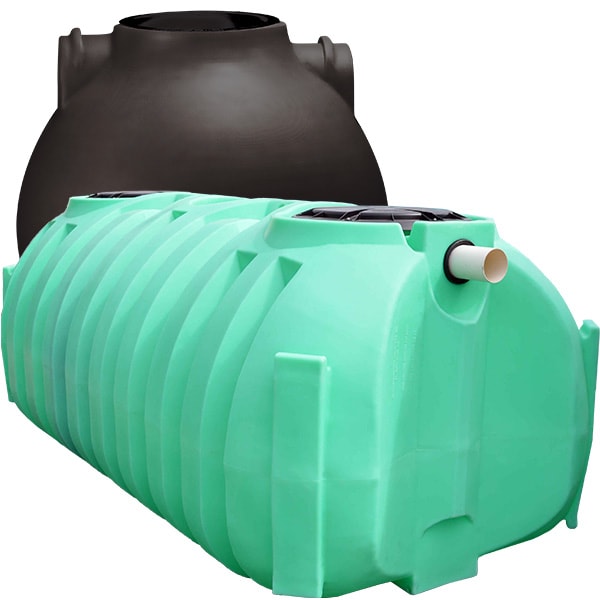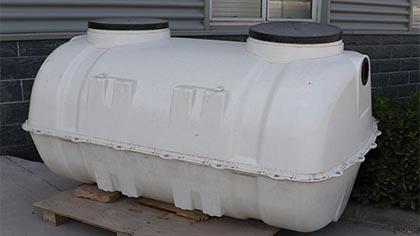Deciphering the Language of Septic System Providers: A Glossary of Terms for Clear Communication and Comprehending
Are you confused by the lingo utilized in septic system services? Don't worry, we've got you covered! In this post, we'll assist you decode the language of septic storage tank solutions with a helpful reference of terms. From recognizing the fundamentals of your septic storage tank to dealing with sludge build-up, we'll offer clear descriptions to ensure clear interaction and understanding. Bid farewell to confusion and hello to a properly maintained septic system!
Septic System: Understanding the Fundamentals

If you are unknown with septic containers, they are below ground containers that hold and treat wastewater from your house. These containers are an important part of your home's plumbing system, responsible for safely and effectively managing the waste produced by your everyday activities. Understanding the essentials of septic containers is essential in order to ensure their correct capability and stay clear of pricey fixings.
A septic system contains two primary parts: the storage tank itself and the drainfield. The tank is where the wastewater moves right into, and it is made to divide solids from liquids. The solids resolve at the end of the storage tank, forming a layer of sludge, while the fluids, referred to as effluent, rise to the top. The effluent then flows right into the drainfield, where it is further treated and dispersed right into the surrounding dirt.
Routine upkeep of your septic storage tank is necessary to prevent concerns such as blockages, back-ups, and system failures. It is recommended to have your tank pumped every 3 to five years, depending upon its dimension and usage. In addition, it is necessary to be conscious of what you purge down the tubes and commodes, as certain chemicals and products can damage the microbial equilibrium in the container.
Drain Area: The Role of Dirt in Garbage Disposal
To maintain the appropriate capability of your sewage-disposal tank system, it is critical to comprehend the function of the drainpipe field in garbage disposal and just how the surrounding dirt plays a crucial role in this process. The drainpipe field, also referred to as the leach area or absorption area, is a necessary component of a septic tank. Its main feature is to filter and treat the wastewater that flows out of the septic system.
When the wastewater leaves the sewage-disposal tank, it is dispersed evenly throughout the drain field through a network of pipes or trenches. The drainpipe area is composed of a layer of crushed rock or rock, which helps to distribute the wastewater uniformly and advertise efficient filtering. Listed below the crushed rock layer, there is a layer of dirt that works as a natural filter.
The soil in the drainpipe field plays a crucial duty in the treatment of wastewater. As the wastewater percolates with the dirt, it undertakes an all-natural procedure of purification and filtration. The dirt works as a biological and physical filter, getting rid of damaging microorganisms, infections, and various other impurities from the wastewater.
The make-up and quality of the soil are vital for the efficient performance of the drainpipe field - septic tank pumping. The dirt ought to have great percolation prices to enable the wastewater to relocate with it quickly. Furthermore, the dirt must have sufficient oxygen levels to sustain the growth of cardio microorganisms, which aid in the break down of organic matter in the wastewater

Effluent: the Fluid Waste From Your Septic System
As the wastewater leaves the drainpipe field, it is known as effluent, and it is vital to comprehend the features and administration of this fluid waste from your septic system. Effluent is the term made use of to describe the cured wastewater that drains of your septic tank and right into the drain field. septic tank pumping. This fluid waste includes a mixture of water, organic issue, and liquified solids
Effluent must be clear and cost-free of any type of undesirable smells. If you observe any foul scents or staining, it could be an indication of a trouble with your septic system. Routine maintenance and pumping of your septic system can assist ensure that the effluent stays tidy and cost-free from impurities.
Proper monitoring of effluent is essential to avoid contamination of the surrounding environment. The drainpipe field is designed to filter and treat the effluent before it gets in the soil. It is necessary to avoid any type of activities that can potentially harm the drainpipe area, such as parking lorries or growing trees with deep root systems.
Sludge: Taking Care Of Solid Waste Build-up
When taking care of solid waste build-up in your septic tank, proper monitoring of sludge is necessary. Sludge refers to the thick layer of solid waste that collects at the end of your septic storage tank over time. Otherwise handled properly, sludge can create different concerns, such as clogging, back-ups, and even system failing.
Regular upkeep is vital to protect against sludge buildup. It is advised to have your septic tank pumped every three to 5 years, look at more info relying on the dimension of your home and the storage tank's ability. Pumping eliminates the accumulated sludge, enabling your septic tank check over here to operate efficiently.
In enhancement to regular pumping, there are a few steps you can require to reduce sludge build-up. First, bear in mind what you purge away. Prevent taking care of non-biodegradable products, such as paper towels, baby diapers, and hygienic items. These can contribute to sludge buildup. Second, think about utilizing septic-safe products that will not disrupt the all-natural microbial balance in your system.
Pumping: Preserving the Wellness of Your Septic Container
Keep the wellness of your septic tank by routinely pumping it. Over time, solid waste and sludge collect in the storage tank, which can lead to clogs, backups, and even system failing.
Regular pumping is recommended to stop the sludge from reaching high degrees. The frequency of pumping relies on various variables such as the dimension of the container, the variety of occupants in your family, and the use of water. Typically, sewage-disposal tanks must be pumped every 3 to 5 years. Nevertheless, it is necessary to note that every system is distinct, and it's finest to seek advice from an expert to establish the optimum pumping schedule for your specific scenario.
Verdict
So there you have it: a convenient glossary of terms to aid you much better comprehend the language of septic tank services. Whether it's finding out about the fundamentals of septic storage tanks, recognizing the duty of the drainpipe area, or recognizing just how to deal with sludge build-up, this glossary will make certain clear interaction and a better understanding of your septic system. Maintain these terms in mind to keep the health and performance of your sewage-disposal tank.
A septic storage tank consists of 2 major parts: the container itself and the drainfield.Normal maintenance of your septic storage tank is crucial to avoid problems such as clogs, backups, and system failings.To preserve click to read the appropriate performance of your septic container system, it is important to comprehend the role of the drain field in waste disposal and just how the surrounding dirt plays an essential role in this process. It is advised to have your septic container pumped every three to 5 years, depending on the size of your family and the storage tank's capability. Whether it's finding out about the essentials of septic storage tanks, understanding the duty of the drain area, or understanding just how to deal with sludge accumulation, this reference will guarantee clear interaction and a much better understanding of your septic system.